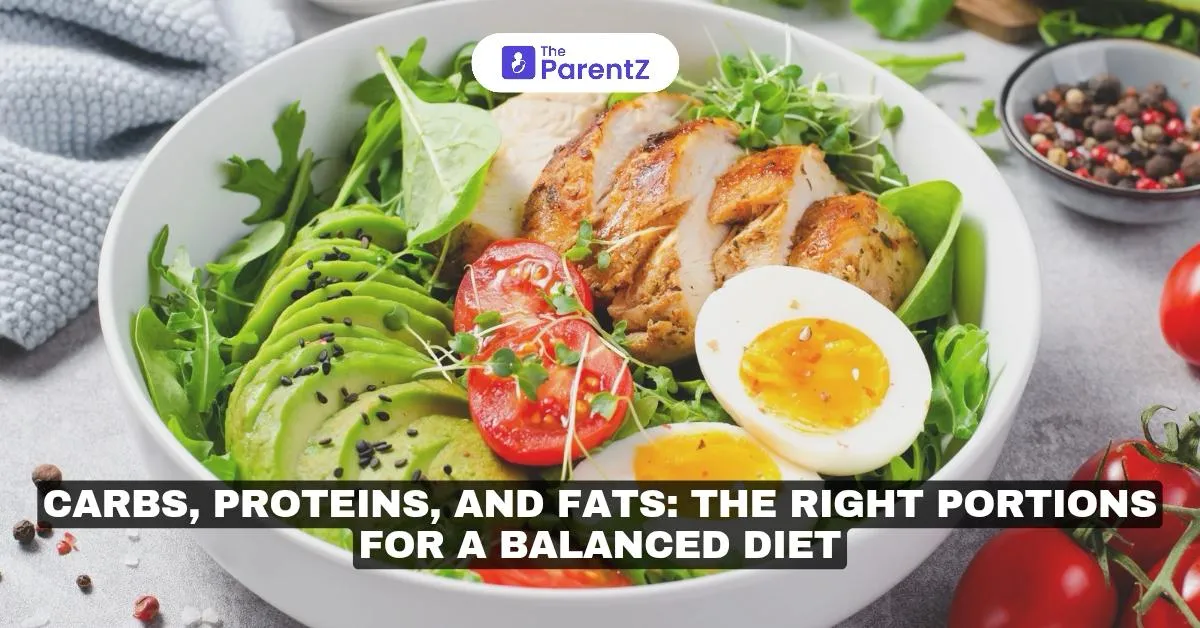Of course, every parent wants their children to eat healthy grow strong, and stay active. However, with so much conflicting nutrition advice out there, feeling overwhelmed has become quite common. And there’s a list of endless questions that parents might have— from how much carbohydrates, proteins, and fats should a child consume daily to what is the right balance for a growing body?
Well, when it comes to eating a well-balanced diet, it doesn't only include eating fruits and vegetables. Rather it's about getting the right proportions of macronutrients essential for boosting energy levels, supporting brain development, and muscle growth.
In fact, according to research, it has been shown that nearly 60 percent of a child’s daily energy intake comes from carbohydrates, 10–30 percent from proteins, and 25–35 percent from healthy fats.
Read this article to find out the right balance of nutrients you must incorporate into your child’s diet.
How Many Macronutrients Does Your Child Need?
Here is what you should know about the role of macronutrients and how much must your child get.
Carbohydrates
Most parents still believe the myth that carbs often are bad. But did you know that they are essential for kids? Your body actually converts carbohydrates into glucose, which then releases energy for powering the brain and muscles. And without enough carbs, kids may even feel tired, irritable, and have poor concentration in school.
How Many Carbs Do Kids Need?
According to a clinical study, carbohydrates should make up 45–65 percent of a child’s daily calorie intake.
| Age Group | Recommended Carbohydrate Intake |
| 1–3 years | 130g per day |
| 4–8 years | 130g per day |
| 9–13 years | 130–275g per day |
| 14–18 years | 130–325g per day |
Some of the best sources of healthy carbs include:
- Whole grains: Brown rice, quinoa, oats
- Fruits: Apples, bananas, oranges
- Vegetables: Sweet potatoes, carrots, peas
- Legumes: Beans, lentils, chickpeas
Proteins
Protein is essential for muscle growth, building immunity, and overall development of your little one. And kids also need protein every single day to repair body tissues and support their fast-growing bodies.
How Much Protein Do Kids Need?
Children should get 10–30 percent of their daily calories from protein.
| Age Group | Recommended Protein Intake |
| 1–3 years | 13g per day |
| 4–8 years | 19g per day |
| 9–13 years | 34g per day |
| 14–18 years | 46g (girls), 52g (boys) per day |
The best sources of protein for kids include
- Lean meats & poultry: Chicken, turkey, lean beef
- Dairy: Greek yogurt, cheese, milk
- Plant-based sources: Lentils, tofu, chickpeas, quinoa
- Nuts & seeds: Almonds, chia seeds, peanut butter
Fats
Just like cabs, fats are also equally important for kids! In fact, they play a significant role in brain development, hormone production, and vitamin absorption. The key is to choose healthy fats over trans fats and excessively saturated fats.
How Much Fat Do Kids Need?
Fats should make up 25–35 percent of a child’s daily calorie intake.
| Age Group | Recommended Fat Intake |
| 1–3 years | 30–40% of daily calories |
| 4–18 years | 25–35% of daily calories |
Here are some of the best sources of healthy fats for kids:
- Healthy oils: Olive oil, avocado oil
- Nuts & seeds: Walnuts, flaxseeds, sunflower seeds
- Fatty fish: Salmon, tuna, sardines
- Dairy & eggs: Whole milk, cheese, eggs
What Does Your Kid’s Balanced Plate Look Like?
According to study, a balanced meal for kids should contain:
- 50 percent vegetables & fruits for vitamins and fiber
- 25 percent whole grains for energy and digestion
- 25 percent protein for growth and repair
- Healthy fats
Conclusion
The key to healthy eating is balancing carbs, proteins, and fats in the right portions when it comes to ensuring your kids eat healthy and stay active all day long.
The reason is clear. This is because when kids get the right portions of each macronutrient, they have good health.








Be the first one to comment on this story.